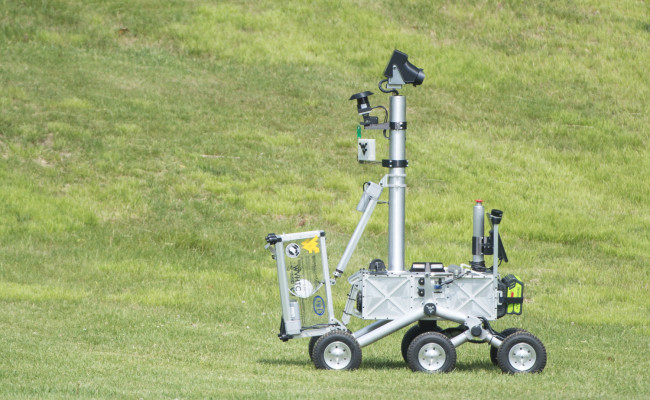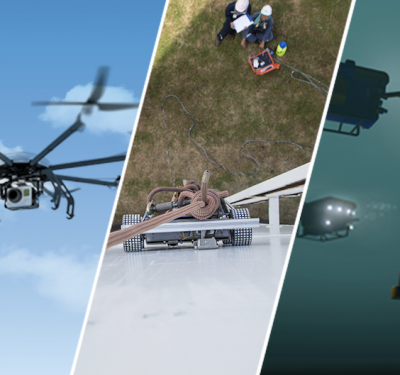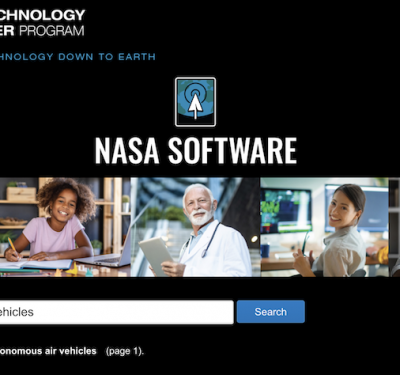
The Mountaineers team robot is seen after picking up the pre-cached sample during its attempt at the level two challenge during the 2015 Sample Return Robot Challenge, Thursday, June 11, 2015 at the Worcester Polytechnic Institute (WPI) in Worcester, Mass. NASA
The Mountaineers of West Virginia University took home $100,000 in prize money after successfully completing Level 2 of NASA’s Sample Return Robot Challenge.
This is the fourth year for the challenge, which is part of NASA’s Centennial Challenges prize program, according to a news release. The Centennial Challenges program is part of NASA’s Space Technology Mission Directorate. This year’s competition was held June 10-12 at Worcester Polytechnic Institute.
The challenge included two levels, and robots had to complete level one before they could move on to level two, according to the release. To complete level one, robots had to leave a starting platform and search for a sample. The sample specifications were programmed into each robot’s onboard computer. The robot had 30 minutes to locate, capture and return the sample to the platform.
During Level 2 of the challenge, competing robots had two hours to autonomously return two undamaged samples, including one sample the team knew about and one they were introduced to the day of the competition, according to the release. Items were classified as easy, intermediate and hard based on complexity of shape, size and design. Teams received more points if their robot returned with a sample categorized as hard.
“It was wonderful to see the teams compete and demonstrate their expertise with autonomous robotic systems,” said Dennis Andrucyk, deputy associate administrator for the Space Technology Mission Directorate at NASA Headquarters in Washington, according to the release. “NASA uses competitions like these to help maintain and advance America’s leadership in technology and innovation. As we’ve seen this week, pushing the state-of-the-art in robotics will ultimately increase the effectiveness and safety of humans in space and will enable cutting-edge scientific exploration of the solar system.”






